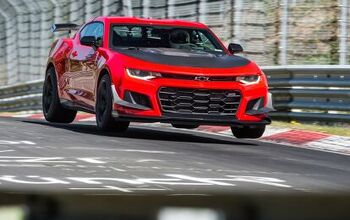2026 BMW iX3 Shows Sustainability is More than Just a Buzz Word

Sustainability is one of the most overused, overhyped terms in the automotive industry. Every manufacturer, vendor, and/or dealer wants to be ecological friendly or at least appear that way. For BMW, it’s not just talk.
The German brand has a goal of net zero by 2050, which means BMW plans to reduce the manufacturer’s carbon footprint by 90% by the year 2050. From a starting point of roughly 150 million tonnes of CO2 in 2019, that means the goal is 15 million tonnes or less by 2050. As of last year, the brand was down to 131 million tonnes, with the aim to be down to 109 million by 2030. To achieve the manufacturer’s goal, BMW is focusing on four key areas; supply chain, production, use phase, and recycling.
It Starts at the Plant
Up to now, improvements to lower the carbon footprint have been made here and there. The first wholistic effort starts now though, with products like the BMW iX3. A brand-new manufacturing plant has opened in Debrecen, Hungary and will produce the new all-electric SUV.
BMW claims the plant will not require the use of any fossil fuels under normal operation, instead relying on renewable power sources and solar energy. Another trick will be the utilization of thermal storage, which extracts energy from stored hot water. At Debrecen, it can be used to power the paint shop for example.
The end result from all the energy savings should enable the Debrecen plant to have roughly two-thirds of a CO2 footprint compared to the brand’s other plants.
Cleaner Batteries
Reducing CO2 during the production cycle is just one part in the greater scheme of things. The materials, and how they’re obtained, can be another area for major savings. With the iX3, BMW is taking what the brand refers to as a “Secondary First” approach. The philosophy is to reuse or repurpose materials as much as possible with the new SUV, and around one-third of the new BMW iX3 is made from secondary raw materials.
This is important, as with an electric vehicle like the iX3, half the carbon footprint can come just from the battery pack. The new Gen6 electric powertrain in the iX3 features cylindrical cells in the high-voltage battery. When comparing the upcoming BMW iX3 xDrive50 to the current European iX3 model, the Gen6 battery pack has a carbon footprint 42 percent smaller than the Gen5 battery cells. A lot of this is achieved with 50% secondary use material for the lithium, cobalt, and nickel. In a simpler, overgeneralization, recycled batteries are used in part to create the new Gen6 battery.
Materials Matter
Aside from the reuse of metals in the battery, the iX3 gives plenty of other materials a second lease on life. The standard seats and other interior details feature yarn that is made from 100-percent recycled PET, with a chunk sourced from single-use water bottles. Same goes for the yarn used on the floor mats and headliner; 100-percent recycled materials.
Continuing under the hood, the frunk liner is comprised of 30-percent recycled plastic sourced out of fishing nets. It’s capped out at 30-percent because that’s the max percentage that can be incorporated into the liner, while still meeting quality standards. The aluminum wheels are targeting 70-percent recycled material, while the metal mounts that attach the wheel assembly to the car should have 80-percent recycled material.
In all, the 2026 BMW iX3 has one-third of the raw material from recycled sources. This translates to a 35-percent CO2 reduction compared to current iX3 sold in Europe. But reducing CO2 isn’t just in recycling materials. The choice of materials and how they are processed adds to the CO2 reduction as well. BMW states the carbon footprint in the supply chain is 42-percent smaller for the 2026 BMW iX3 50 xDrive than for the current model.
When an Electric Vehicle Becomes Cleaner than Gas
So, the new iX3 is clearly greener that the out-going model. But how does that relate to non-electric vehicles? Well, even with all of these savings, BMW is very transparent that the new iX3 has a larger CO2 footprint than an equivalent gas model after assembly.
But, when using energy off the European electrical grid, the 2026 BMW iX3 50 xDrive will obtain a smaller carbon footprint (based on overall life cycle) compared to a similar gas-powered SUV when roughly 21,500 kilometres (13,358 miles) has been driven. If the new iX3 is charged exclusively using electricity from renewable sources, it only needs to travel 17,500 kilometres (10,873 miles) before hitting the same cross-over point. From this point on, the all-electric iX3 will continue to be clear and greener, and after 200,000 kilometres (124,260 miles), it will have one-third less of a carbon footprint.
Look for more information and details about the upcoming 2026 BMW iX3 later this summer.
Become an AutoGuide insider. Get the latest from the automotive world first by subscribing to our newsletter here.

A 20+ year industry veteran, Mike rejoins the AutoGuide team as the Managing Editor. He started his career at a young age working at dealerships, car rentals, and used car advertisers. He then found his true passion, automotive writing. After contributing to multiple websites for several years, he spent the next six years working at the head office of an automotive OEM, before returning back to the field he loves. He is a member of the Automobile Journalists Association of Canada (AJAC), and Midwest Automotive Media Association (MAMA). He's the recipient of a feature writing of the year award and multiple video of the year awards.
More by Mike Schlee





































Comments
Join the conversation
Ha! "Fossil fuels" are petroleum based and all that 'renewable energy' they claim to be carbon free uses petroleum products in their manufacturing. Such bs and so misleading.